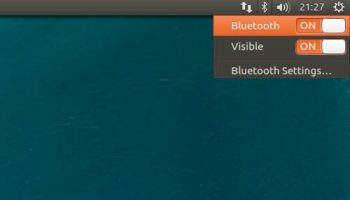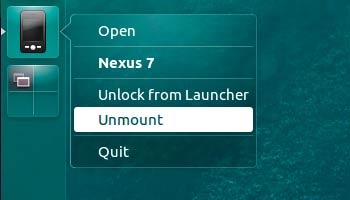8 Simple Ways to Improve Battery Life on Linux Laptops
 Desktop Linux doesn’t have the best reputation when it comes to laptop battery life (or ‘power efficiency’ if you’d rather).
Desktop Linux doesn’t have the best reputation when it comes to laptop battery life (or ‘power efficiency’ if you’d rather).
A laptop that might push 8 hours with Windows 10 might struggle to hit 4 hours with Ubuntu.
Quite why this is the case is a complex, caveated, and contentious issues. But given the multitude of laptops and PC set-ups out there that the Linux kernel has to support, it’s not surprising either.
Linux users’ propensity to extend the lives of older hardware — equipment whose battery packs have seen a fair few cycles — could also play a factor.
Don’t misunderstand me though. Linux is super power efficient when it is fine tuned to the hardware it is running on, as seen with Chrome OS, Android, Tizen, Ubuntu Phone and Sailfish OS.
But running an off-the-disc OS with a catch-all configuration means you may need to do a bit more tweaking yourself to improve battery life on Linux.
So here’s a few tips that will help extend battery life both when it’s dwindling down and before and keep the power cord at bay in the process.
1. Set Ubuntu’s Built-In Power Settings

You bought a powerful laptop and you want to use that power. But use it when it’s needed; when you’re just browsing Reddit on the sofa, or trolling us from a café don’t need to have your fans working overtime.
Ubuntu includes a small set of power behaviour settings than you can adjust to suit your needs. E.g., what to do when you close the laptop lid, what to do when battery is critically low, and how to behave you’re plugged in to AC power.
- Open ‘System Settings’
- Select the ‘Power’ icon
- Adjust settings to suit your needs
2. Turn off Bluetooth
Most of us with mobiles know that bluetooth is a big drain on power levels. Linux is no exception so, when you don’t need bluetooth, you should switch it off.Obviously this tip isn’t so hot if you use a wireless keyboard and mouse to get stuff done!
On Ubuntu you can toggle Bluetooth on/off through the bluetooth menu that shows in the system tray area. Simple click the Bluetooth icon and:
- Switch slider to ‘off’ (more recent versions of Ubuntu)
- Click ‘turn off Bluetooth’ (older versions of Ubuntu)
Skip this tip if your laptop uses the newer, battery-friendly Bluetooth 4.0 LE (if it’s a modern laptop chances are uses this).
3. Turn off Wi-Fi
If you’re not going to be online for a while remember turn off your Wi-Fi as it can be a big hit on battery.Even in the background as you idle your Wi-Fi card or dongle will be scanning for new available networks.
In Ubuntu (Unity) this is as simple as going to the Network Indicator in the system tray, clicking, and selecting the ‘Enable Networking’ menu item to disable.
- Click on the ‘Wi-Fi’ icon
- Select the ‘Enable Wireless’ entry
4. Lower Screen Brightness
Another obvious one: the brighter your screen is the more power you’ll use.One of the quickest and most effective ways to cut power usage is to turn down the brightness.
You don’t need a digital tan.
If your keyboard has brightness control keys give them a tap to find a brightness level that works for you. You can also use the slider tucked away in the ‘Brightness and Lock’ section of Ubuntu’s System Settings.
- Open System Settings
- Select Brightness & Lock
- Adjust the Brightness slider
Another offbeat suggestion is to use a lighter, brighter wallpaper. Why? The Ubuntu Kernel team once noted that LCD displays use more power to display dark colours than they do lighter ones:
‘A full black background may consume ~0.5% to 1% more power than a fully white background.’
5. Unplug USB Drives, SD Cards, Discs, etc
You look totally l33t with your Linux laptop oozing peripherals from every available port.But each USB drive, SD card and smart phone you have plugged in is suckling away on your laptop’s precious juice.
Disconnect items you don’t need, and safely eject USB drives, MTP items, etc through Nautilus, Unity or, if you use one, an indicator-applet like indicator unmount.
- Open a new File Manager window
- Click the eject button on attached USB drives/SD cards
6. Quit Apps You’re Not Using
Running apps are making use of CPU and RAM, maybe network (however small) and maybe keeping your HDD awake — even if they don’t seem to be doing anything.I always seem to have a gazillion apps open on my workspace, most of which stay minimised. Google Chrome, VLC, Rhythmbox, and so on.
Some of these apps sit in the background actively using my laptop’s resources, causing my device work harder, and thus use more power to keep itself cool.
If you’re the same try to remember to close an app when you’re done with it (at least until something like ‘App Nap’ comes to Linux proper).
Look in the Unity Launcher for apps with a small light beside them (this means they are open). Quit the ones you are no longer using by right-clicking on the respective launcher icon and selecting the ‘Close/Quit’ (wording may vary) option.
7. Avoid Adobe Flash (Where Possible)
Watching Flash video on a Linux laptop is… Well, you might as well drill a hole in your battery and let the lithium-ion innards leak all over the floor!Okay, using Flash is not that bad but it is fair to say that its use does give a noticeable hit on battery life.
If you want (or need) to watch online Flash video try to use a browser that configures Flash content to show ‘On Demand’.
Firefox will prompt you to ‘enable’ Flash elements, while Google Chrome has a hidden ‘Plugin Power Saver’ option in chrome:flags that you can try.
8. Install TLP
TLP is a popular tool that runs in the background.It offers wealth of control over various power settings and hardware management processes. It lets you tune settings to your preferred levels.
Options include:
- Kernel laptop mode and dirty buffer timeouts
- Processor frequency scaling including “turbo boost” / “turbo core”
- Power aware process scheduler for multi-core/hyper-threading
- Hard disk power management level and spin down timeout
- Runtime power management for PCI(e) bus devices
- Wi-fi power saving mode
- Powering off disc drive
- Audio power saving mode
For this reason TLP comes with a default configuration that should, for most, improve battery life a little.
Those who feel capable can tweak the available parameters or play with configurations further to suit the needs of their hardware. A full guide to using TLP can be found — shock — on the TLP wiki.
The app is available to install on Ubuntu 14.04 LTS and up from the official TLP PPA.
Sidenote: TLP is not something to play with willy-nilly. You may prefer to try the similarly focused by more approachable Laptop Mode Tools utility from the Ubuntu Software Center (though some debate exists as to whether this newer Linux kernels benefit from this).




